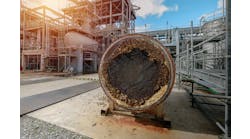HTRI (Heat Transfer Research, Inc.) is launching a global industry-wide effort to examine the way heat exchangers are designed. We will review and analyze specific exchanger services to develop design margins for use in sizing heat exchangers rather than relying on fouling factors.
Shell and tube heat exchangers are used extensively throughout the process industry and as such a basic understanding of their design, construction and performance is important to the practising engineer.
This white paper discusses the basic design, construction and performance of shell and tube heat exchangers.
Download this white paper now.
TEMA fouling factors have been used for decades in heat exchanger design, with values that have remained unchanged for a long time. Although TEMA indicates in its publication of fouling factors that such values should be used only when more accurate information is not available, industry has had a tendency to use such values as the standard approach. The original TEMA fouling factors were not only meant to include the real effect of fouling, but also took into account uncertainty in the prediction of heat transfer coefficients, thus representing a combination of a fouling and safety factor.
As our knowledge and sophistication in the prediction of heat transfer coefficients has grown, we should no longer use the same fouling factors that took into account the uncertainty in prediction of heat transfer coefficients, since this will result in the design of larger heat exchangers than are needed for a particular process. In many cases, such overdesign creates conditions that promote the fouling that we are trying to avoid.
To facilitate an alternative to the use of TEMA fouling factors, HTRI has established a task force to develop a design philosophy for adding margins in the design of heat exchangers. Such a design philosophy will allow an alternate approach to the use of fouling factors. The Exchanger Design Margin Task Force, lead by HTRI staff, will bring together representatives from the refining, petrochemical and chemical industries, as well as representatives from engineering and heat exchanger manufacturing companies, to share experiences that can translate to a better approach for establishing heat exchanger design margins in specific processes or services.
The first task is to generate a white paper assessing current knowledge and describing the key steps required to improve the application of heat exchanger thermal design margins. This will be accomplished by the end of calendar year 2005. In addition, research projects needed to improve the confidence in the analysis of thermal design margins will be identified and implemented during 2006.
Such an effort, including global participation by experts in the process industries, is required to shift the approach used during the past decades and make significant progress in improved heat exchanger design. For more information or to express interest in participating in this Exchanger Design Margin Task Force (EDMTF), contact HTRI at [email protected].


